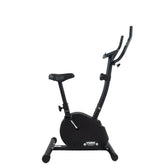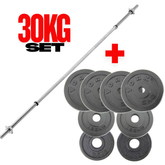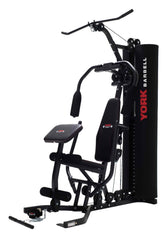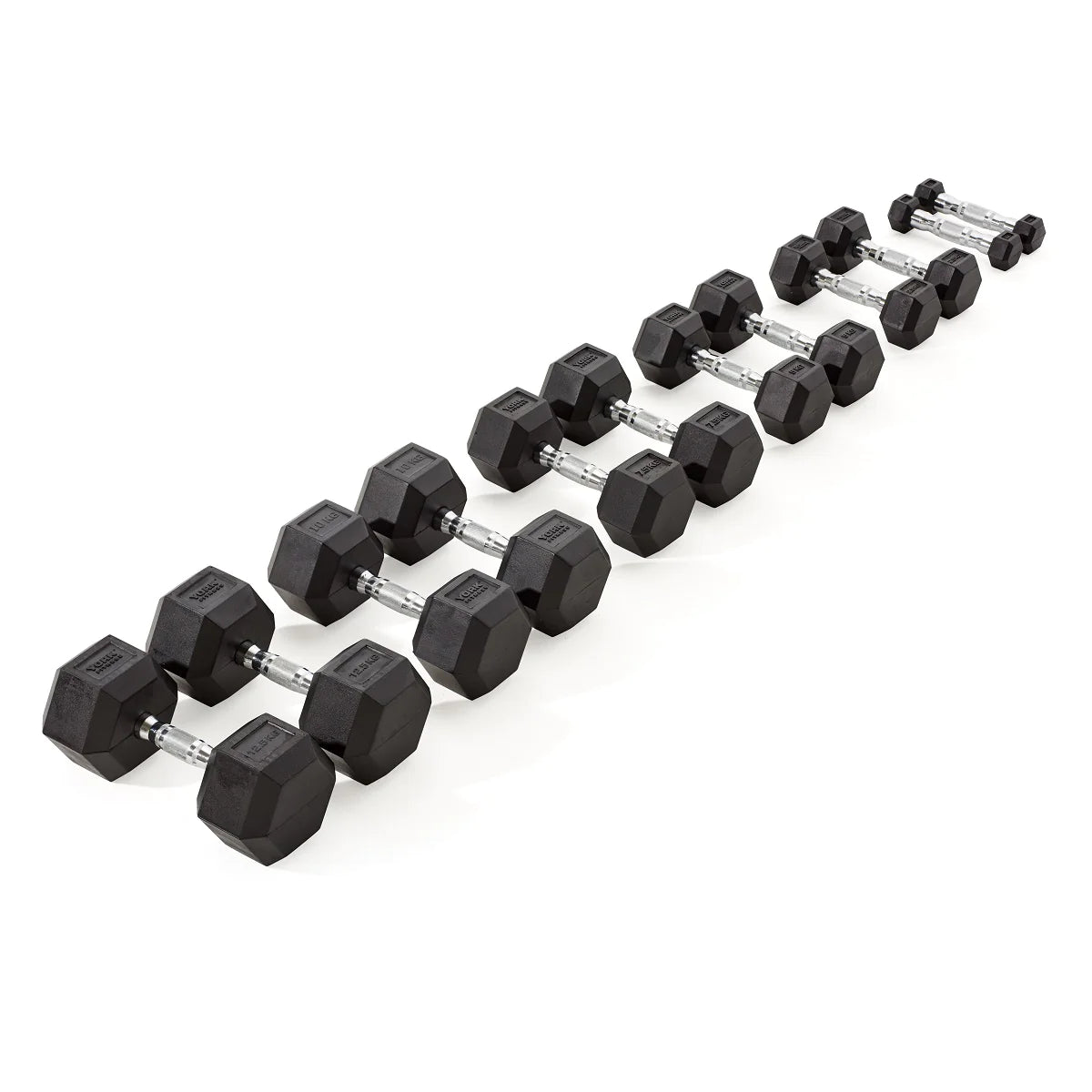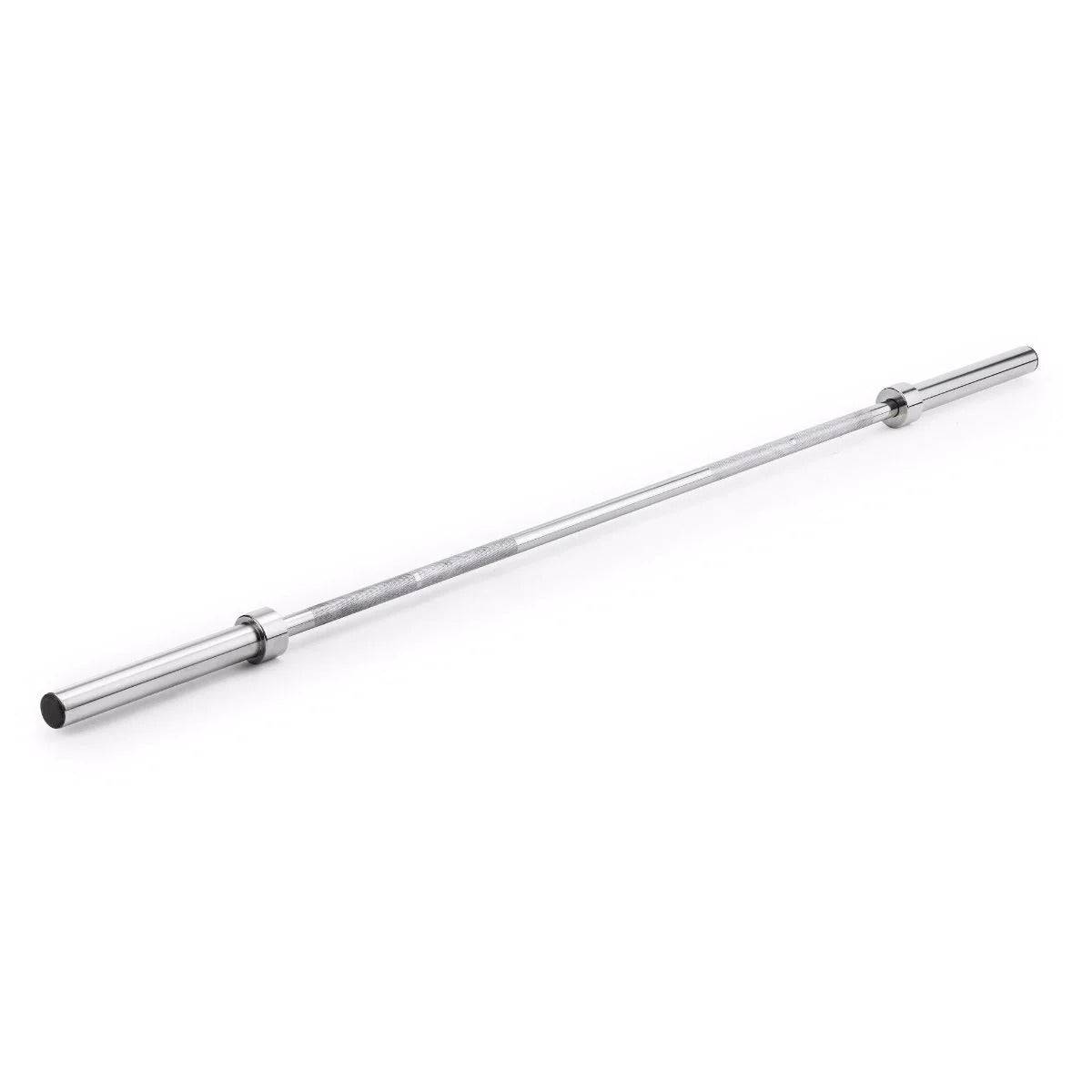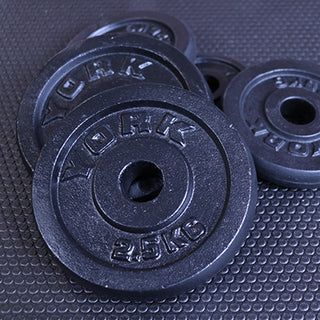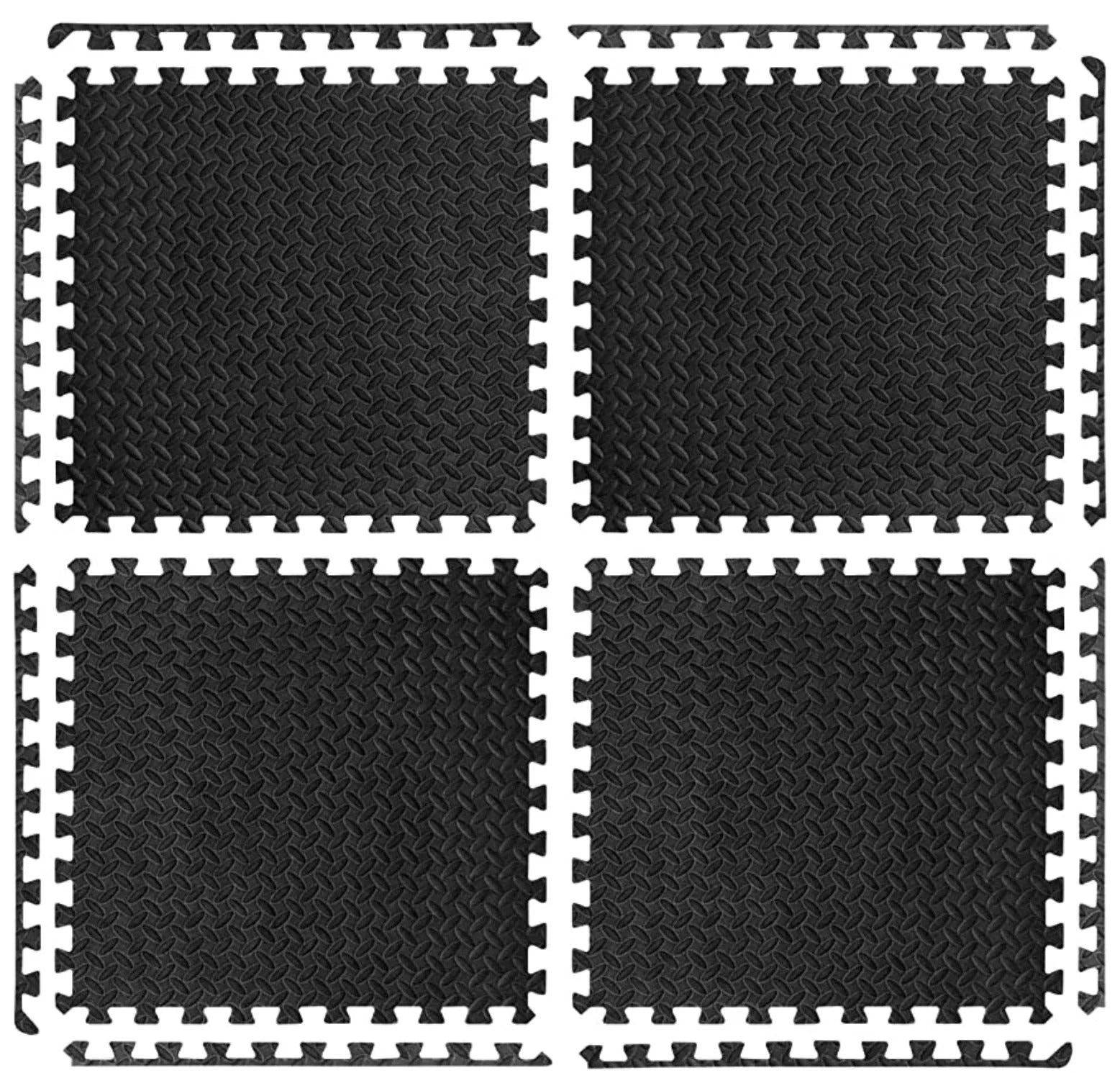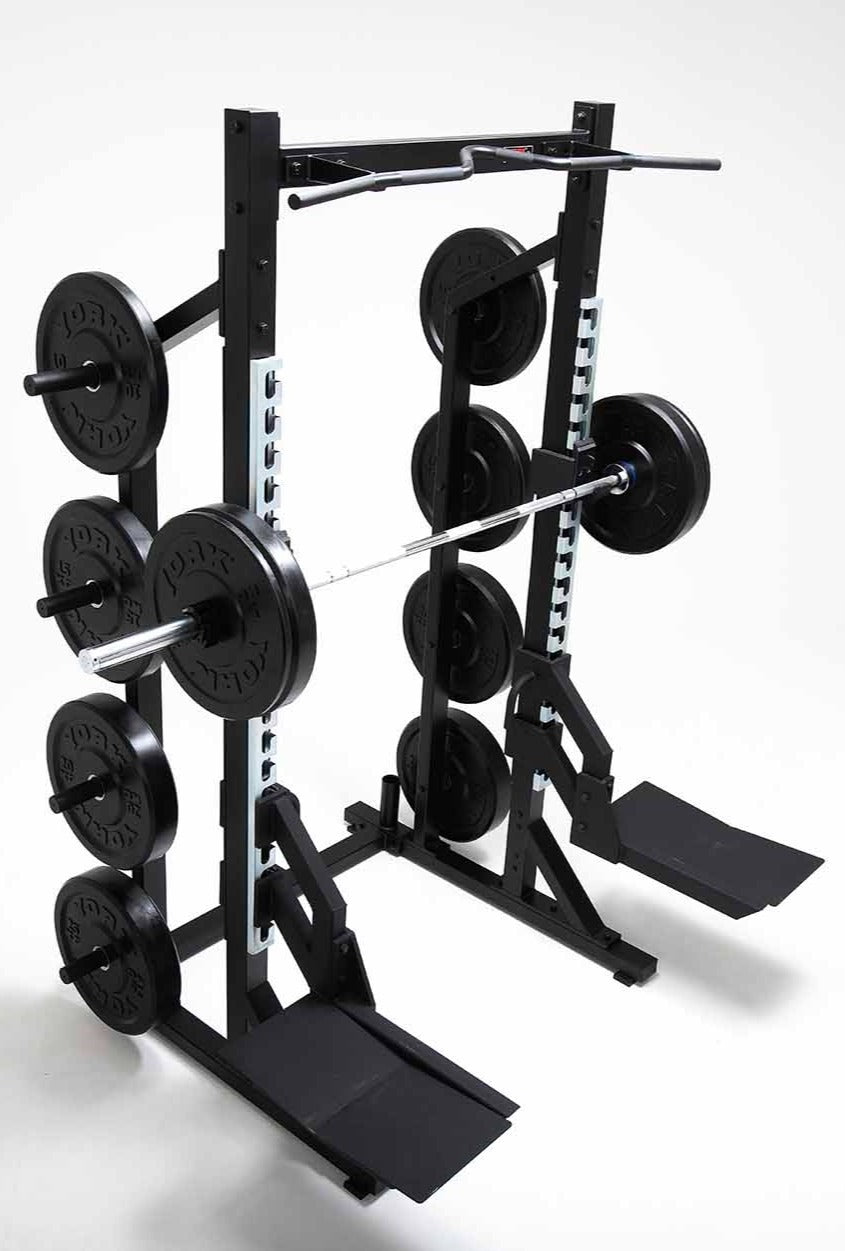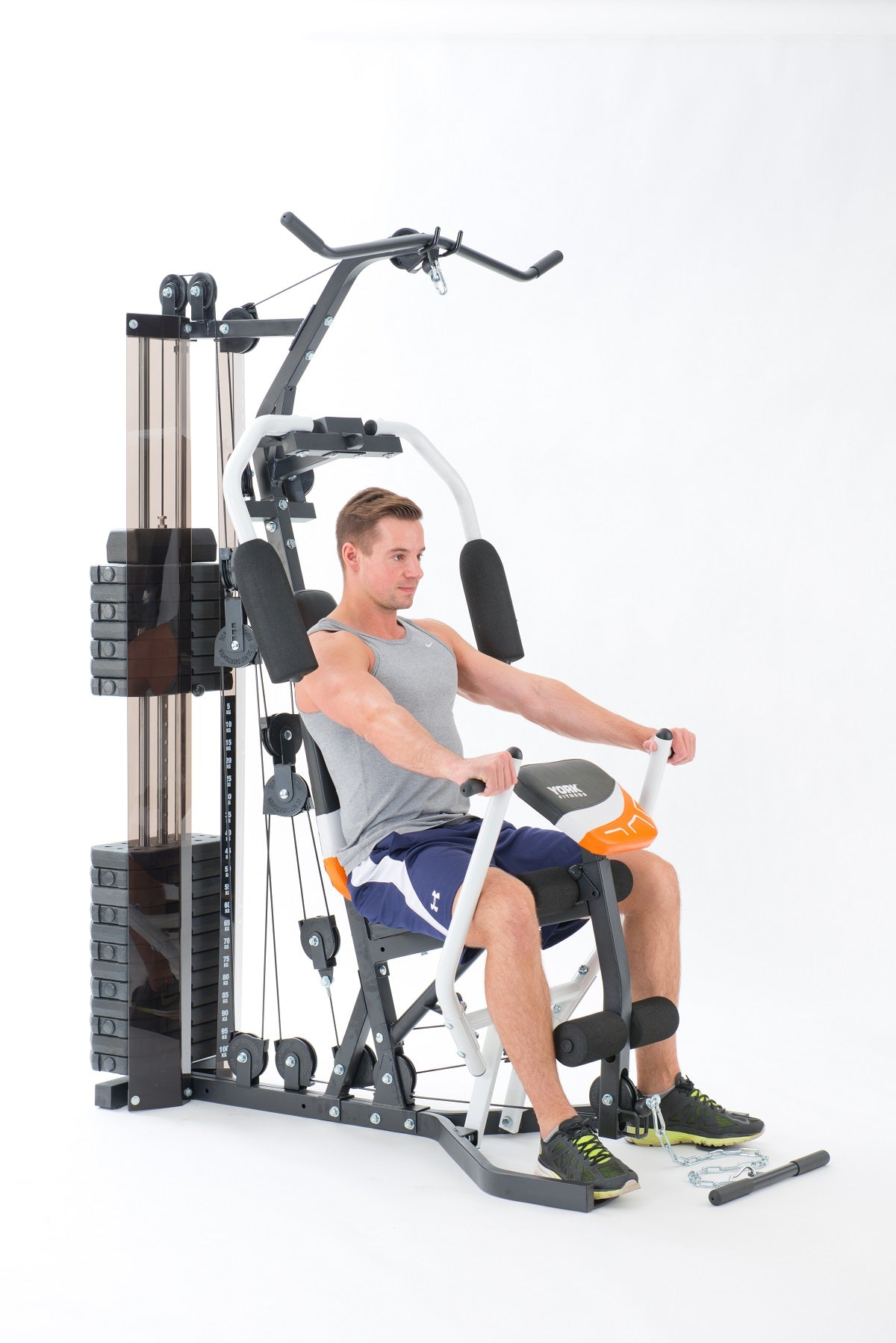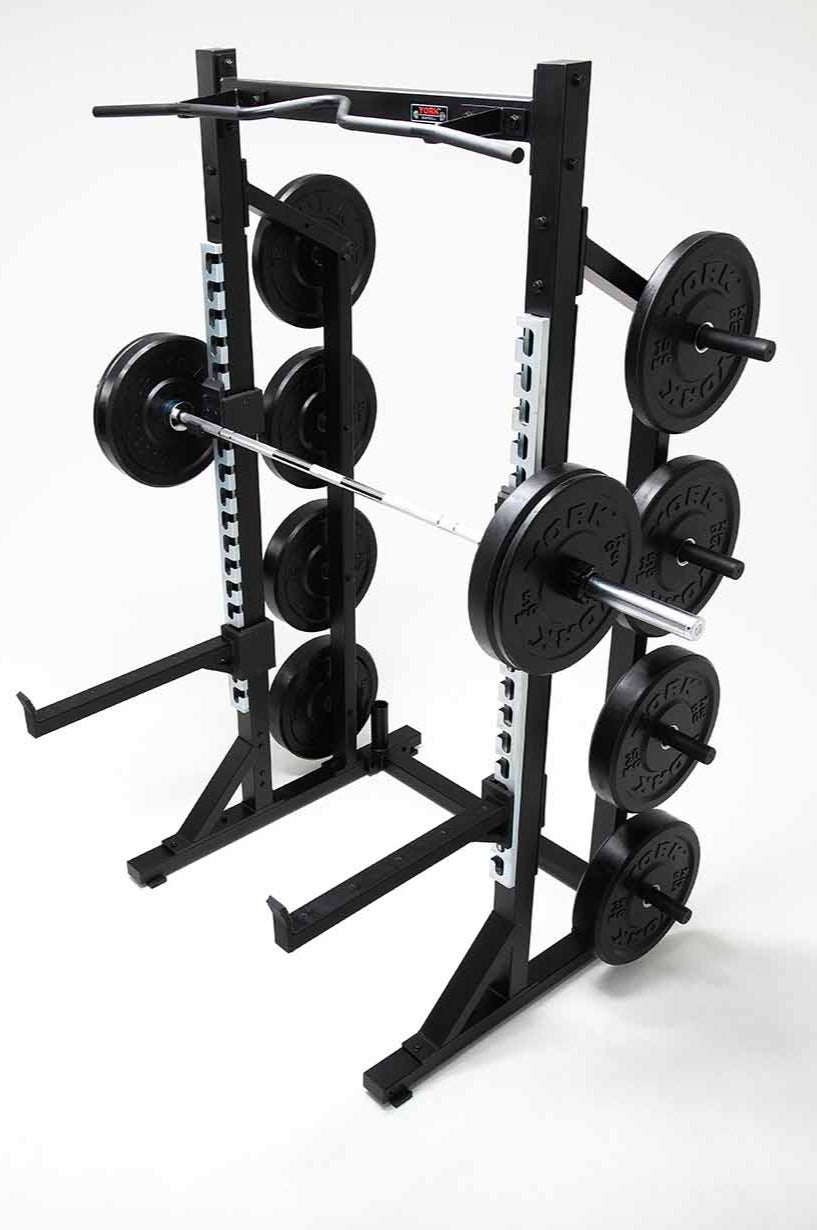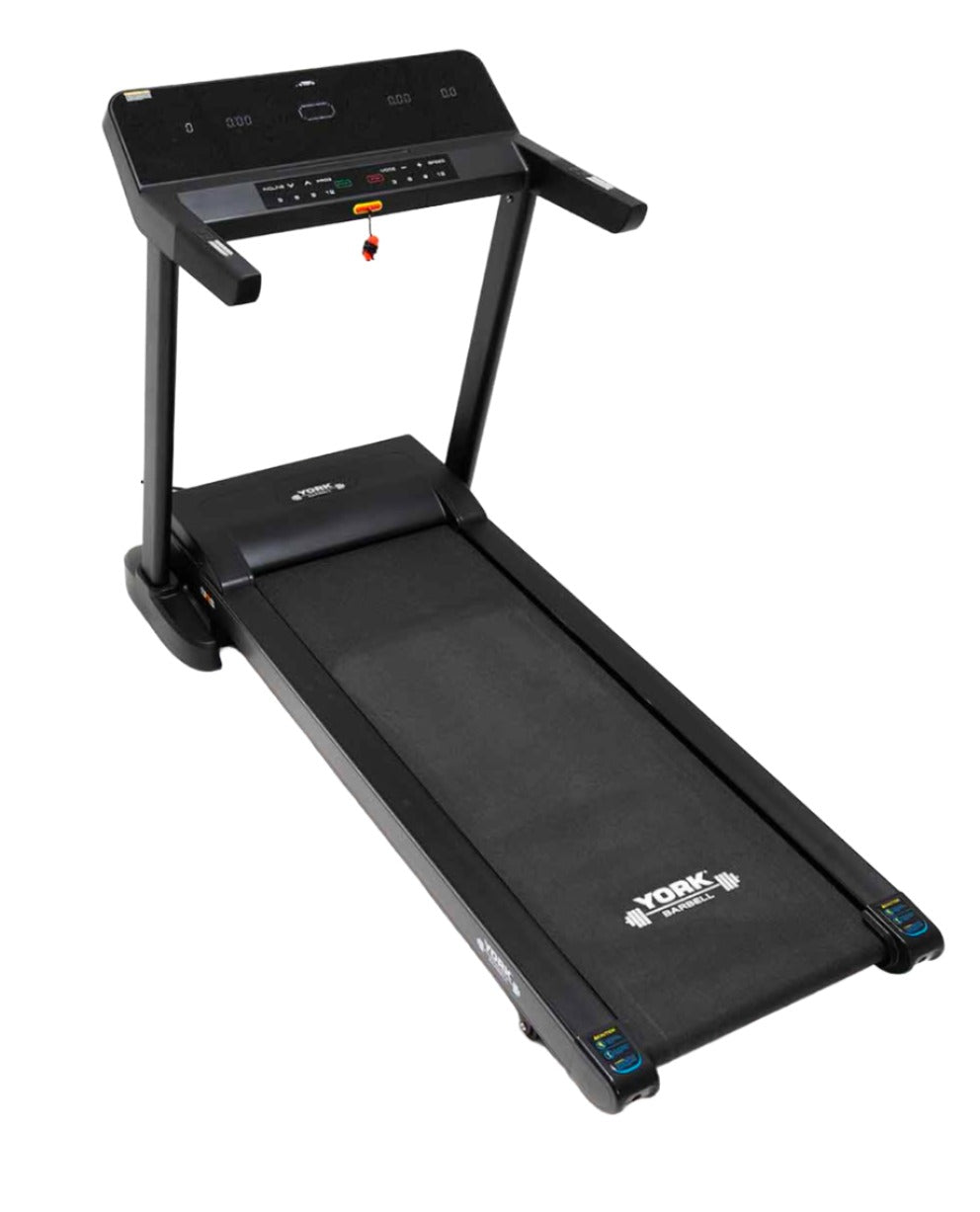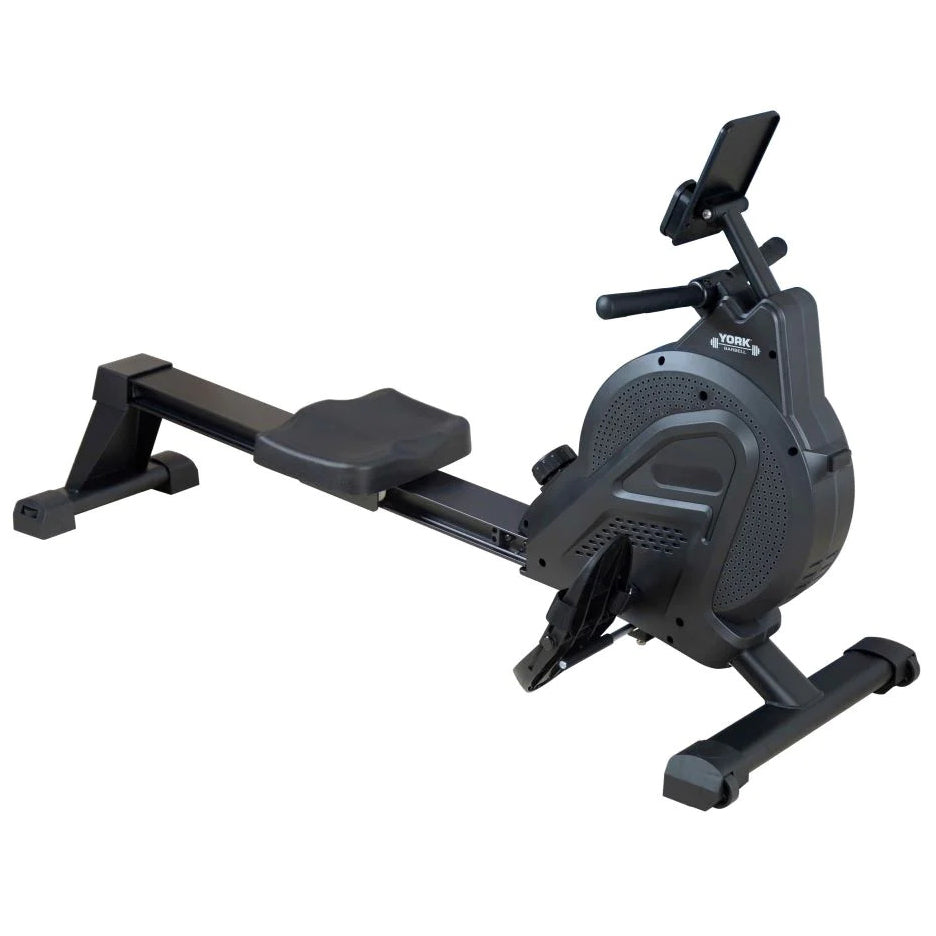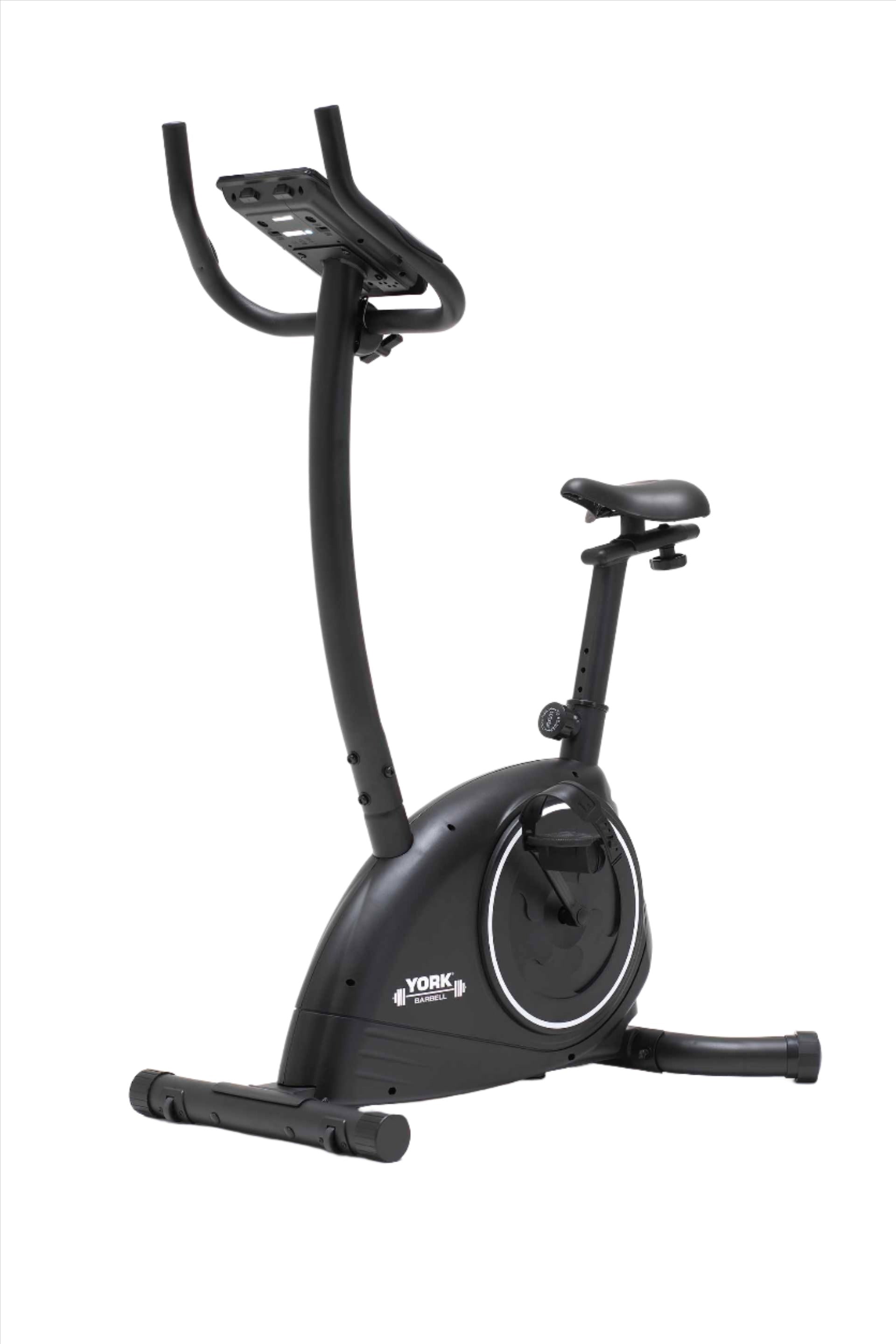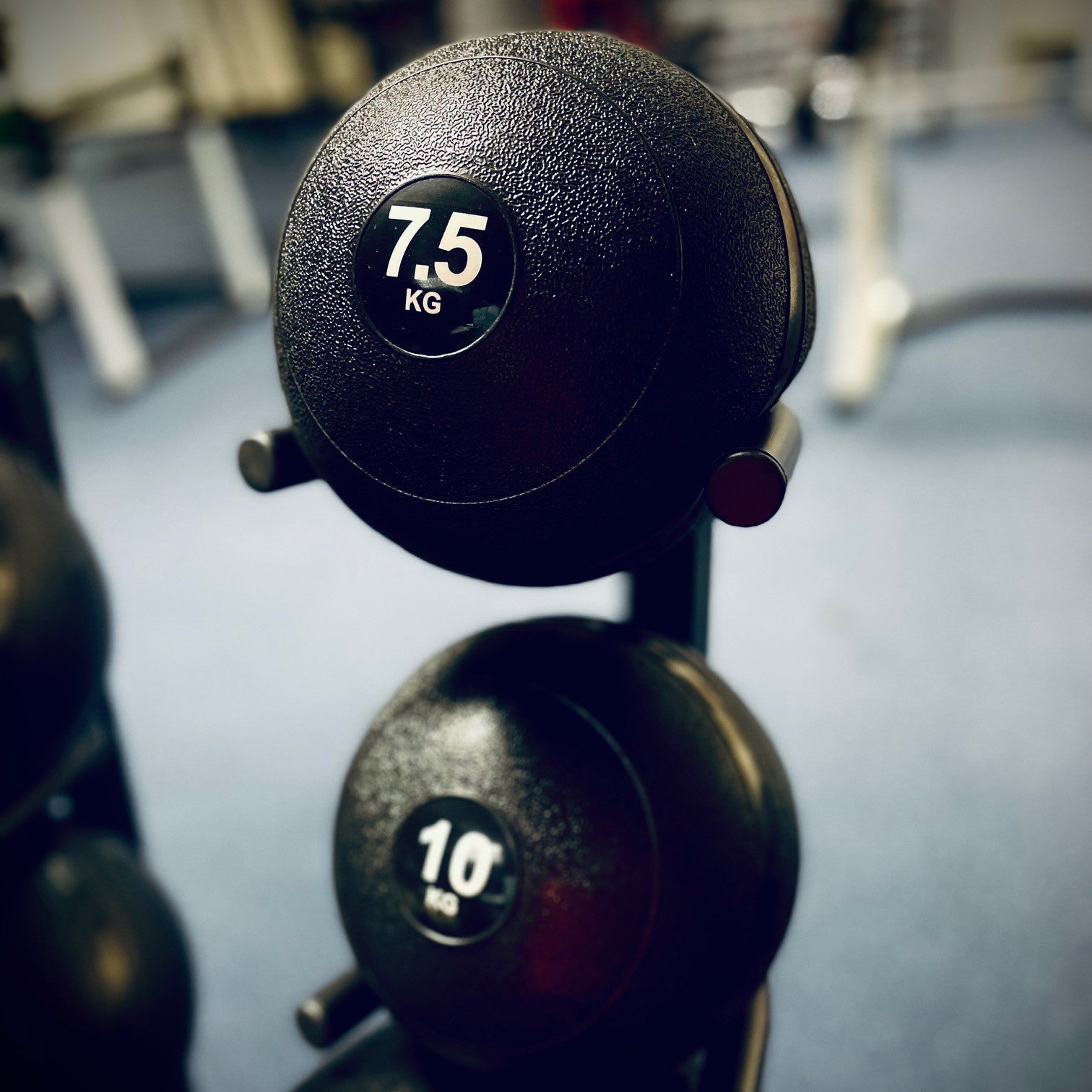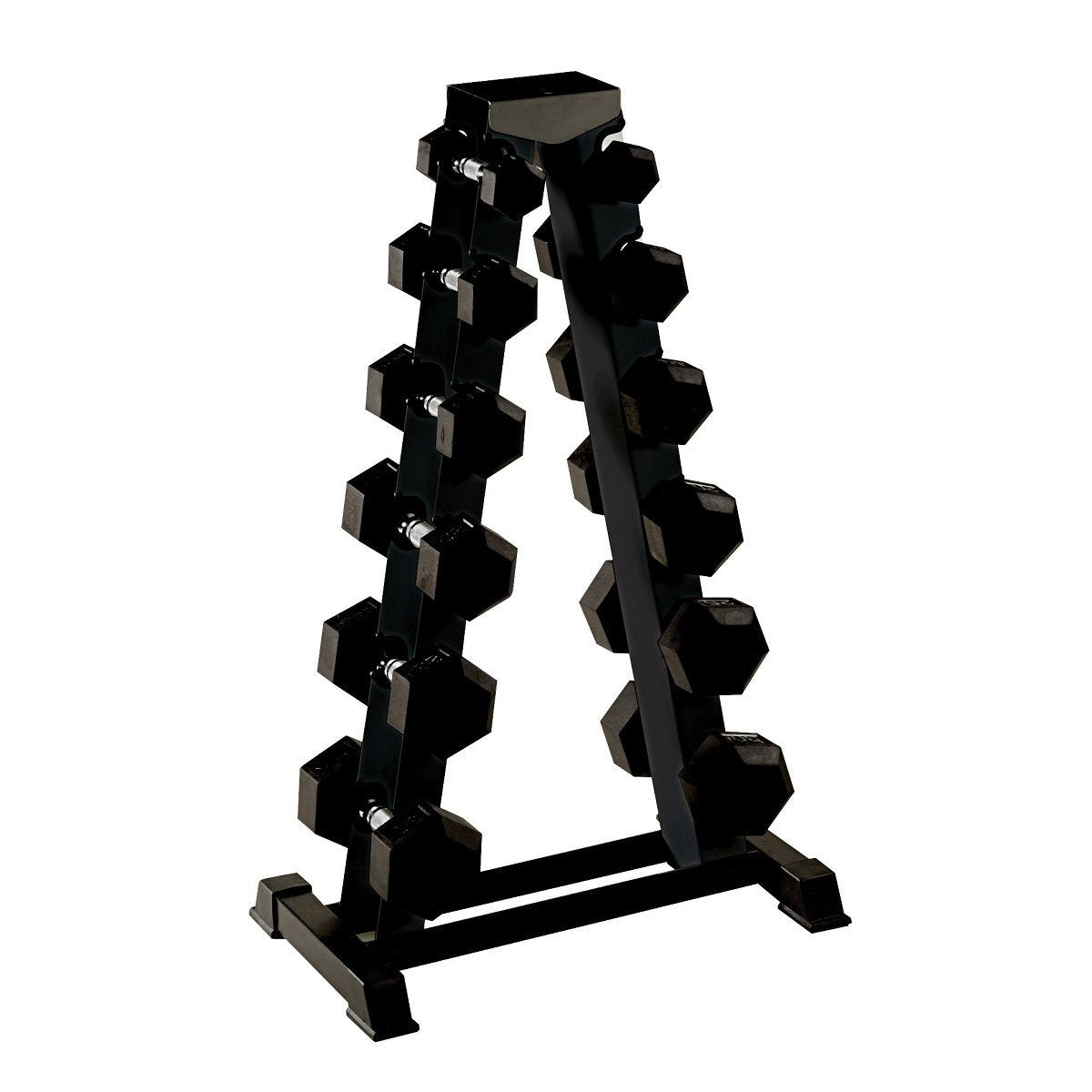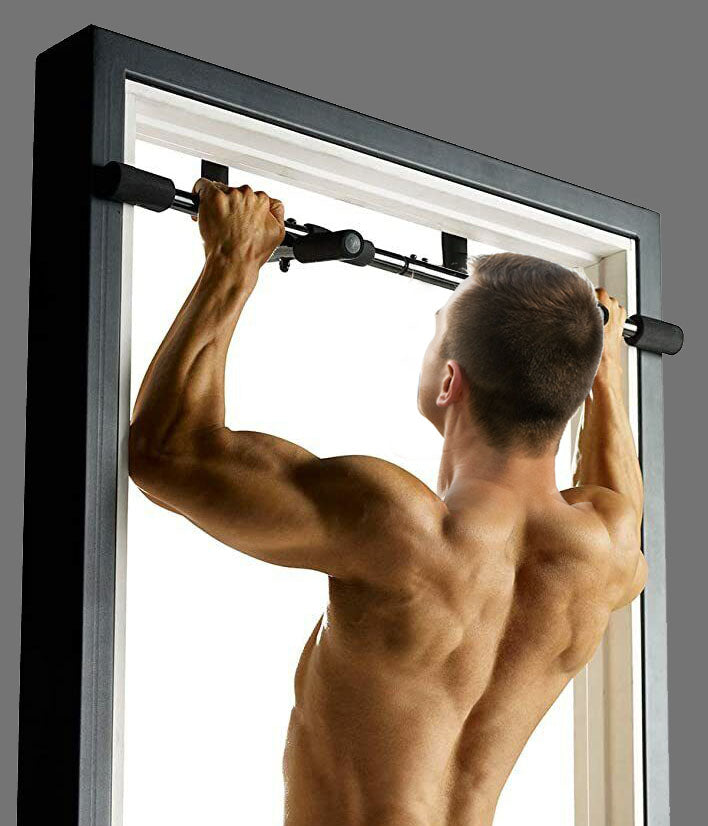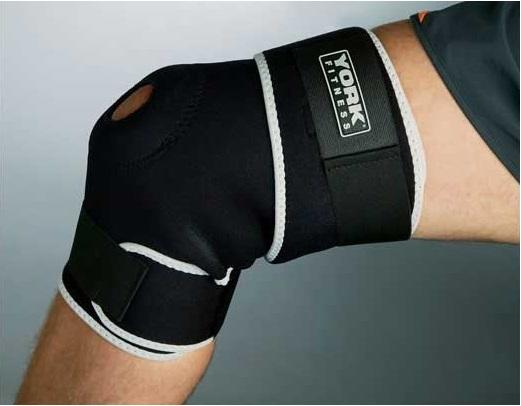Whether you’re buying for yourself, your business or someone else. The purchase of weight-lifting equipment can be a big investment. Good quality equipment will last years. So doing your research and making the right decisions before buying will save you time and money in the long-run. We've created this guide to help you make informed decisions on your purchase, so you get the best out of your weight equipment, no matter the reason for your purchase.
We produce weight equipment for both commercial and non-commercial uses, this guide covers home (non-commercial) equipment. Occasionally our customers like to purchase commercial equipment for their home gym to benefit from the extra build strength, performance and durability that comes with this class of equipment, however the steps we recommend for purchasing commercial equipment, or even a mix of equipment are the same.
Buying weight equipment
Home weight equipment, such as weights, weight benches, lifting stands and all-in-one home gyms can all be bought from us online, at very competitive prices.
Not only does this mean you won’t have to transport the equipment home, but you can browse our entire range and explore all their features, from the comfort of your computer or phone. Home equipment is less expensive than commercial equipment. It generally takes up less space and is still built to high standards, but with less intense use in mind.
If you have a personal training business, your own gym, or maybe just train to a high level. Then commercial weight equipment is going to be more suitable for your needs. Check out our commercial equipment which is built to more rigorous standards, allowing for more frequent, intense use and heavier loads.
How to choose the right weight equipment
Step 1. Establish your training goals.
Unless you know what you want to achieve with your weight lifting, you won’t know what equipment you’ll need to buy. So think clearly about your goals and what sort of training you want to do, think about your long-term goals and also consider any sports you do. Do you want to put on bulk, get leaner, train for strength or improve your fitness for sport?
Step 2. Work out your current strength.
You need to consider the amount of weight you’ll need to create an effective and progressive resistance. There is little point purchasing a 50 kg barbell set for bench press, if you can already bench press 100 kg comfortably. Likewise, there is little point buying hundreds of kilos of weight, if you don’t already have a foundation of strength. If you have access to a gym then spend some time establishing your 1 rep max weight for each exercise you’ll be doing.
Step 3. Decide how much weight you'll need.
Using your max lifts you can then decide accurately how much weight you'll need.Look to purchase enough overall weight to match your 1 rep max in your strongest exercise, plus at least 10% extra to allow for progression. If your strongest lift is a long way off your next strongest lift, you may want to consider buying just enough weight to perform this lift to save money. Otherwise you'll have a lot of weight sitting around, only being used when you perform that one exercise.
You'll want the total weight spread across several weight plates. So, for example, if you decided to purchase 200 kg. You could break this up into 4 x 20 kg plates, 4 x 15 kg plates, 4 x 10 kg plates, 2 x 5 kg plates, 2 x 2.5 kg plates and 4 x 1.25 kg plates.
By having a mix of larger and smaller plates you'll be able to create any possible weight and also you'll have smaller plates to use for making up dumbbells. Remember you can only really use plates in pairs, so it makes more sense to buy them in even amounts.
Also consider that you'll only be able to load a bar with a certain number of plates, so if you're going to be lifting heavy quite often, maybe consider more of the larger plates and only a pair of each of the smaller plates.
The next step is also important, because you may decide you don't even want to use weight plates at all.
Step 4. Decide on exercises you want to be able to perform.
So whilst you can do a push-up everywhere, it’s not going to help you train every muscle in your body. So decide on the muscle groups you’re going to be training (ideally all of them!) and decide on how you would like to train them. This will help you make decisions on the individual pieces of equipment you’ll need.
Step 5. Measure the space you have and do a basic floor plan.
Most people have limited space when it comes to home gym equipment. So if you are planning a home-gym, or even just buying some weights, it’s really worth measuring the floor space available and creating a basic floor-plan on paper. Check the measurements of the equipment you are interested in, against your floor plan to make sure you have space. Don’t forget you'll need space to move around the equipment and to perform the exercises you’ll be doing on the equipment.
Step 6. Look at the possible uses for each piece of equipment.
This may sound obvious, but to save money you may not need every piece of equipment you’re thinking of. Most equipment is very versatile and can perform multiple functions. You may be surprised at how much you can do with just a good weight bench!
With each piece of equipment you’re thinking of buying, check if you can combine exercises with another piece of equipment. For example, if you were thinking of buying our heavy duty squat stands, a York Fitness bench and a workout tower. You could achieve all of the potential exercises and more, with the York Fitness 2800 power cage and a weight bench. This would save you money overall.
Step 7. Check the limitations of the equipment.
Weight lifting equipment may be made out of strong materials, but also customers demand quality at low prices, this results in equipment with maximum loads aimed at varying levels of ability.
Generally lower priced equipment is more suitable for beginners and higher priced equipment is aimed at those lifting heavier weights. With that in mind and knowing your max lifts, you can establish what level of equipment you should be using. If you’re training for strongman competitions then you would be wasting your money on lower priced equipment, because you’ll be limited by the maximum load that equipment can take.
The same goes for body size. Check the dimensions of equipment such as benches to make sure they’ll be comfortable if you are tall or of a larger build.
Step 8. Decide on any accessories you may need.
Depending what weight equipment you decide on, you may need some additional accessories. Collars are essential for barbells and dumbbells and whilst barbell/dumbbell sets normally come with collars, if you decide to buy separate bars and plates then you’ll need collars. If you want to protect your floor, then consider equipment mats or floor guards. If you want to store weights, cable accessories or collars then consider storage options for those as well.
Once you’ve been through all the steps above you’ll have a good idea of the equipment you want. But to be sure, we’ll just go through the main types of weight equipment available to you.
Types of weight equipment for home use
Home-gyms / Multi-gyms

These are all-in-one equipment that work off a stack of weight plates connected by a cable and pulley system to provide the resistance for each exercise. You can then set the resistance by putting a pin into the weight stack at a certain point. There is a frame that surrounds the weight stack, which normally holds a bench and sometimes a seat. They make use of several attachments, allowing a large number of exercises to be done with the one piece of equipment.
Advantages of a home/multi-gym:
- Ability to perform a wide range of exercises with one piece of equipment.
- Relatively low footprint for the number of exercises available.
- Very simple and fast method of weight adjustment.
- No need to purchase weight plates to go with them.
- Good value for money.
Potential disadvantages of a home/multi-gym:
- Maximum weight/resistance limited by the weight of the stack.
- Self-assembly of the equipment is required.
- Once in place they are more difficult to move than other equipment.
- Some people for them less natural feeling than free weights.
Lifting Stations/Racks

These consist of a metal frame with weight supports to allow you to place heavy weight bars on the frame once you’ve finished lifting. Some models may also come with a weight bench and additional exercise functions, such as the York Fitness 3000 Power Lifting Station. Lifting stations are a great alternative to multi-gyms if you like heavy lifting, prefer to use weight plates or already have a set of weight plates to use.
Advantages of a Lifting Stations/Racks:
- Ability to perform a wide range of exercises with one piece of equipment.
- The total resistance can be much higher than a multi-gym.
- Many people prefer the feel of lifting weights over cable-pulley resistance.
- Good for heavy lifts such as squats
Potential disadvantages of a Lifting Stations/Racks:
- Self-assembly of the equipment is required.
- Weight plates need to be purchased/provided separately.
- Overall footprint can be quite large.
Weight Benches

The clue is in the name with these! A good quality weight bench is probably the best investment you can make in your home weight-lifting set-up. They are very versatile and light-weight, taking up very little space and allowing you to perform several key weightlifting exercises. Most benches can be moved with little effort. Some models, such as the York Fitness 9201 Power Lifting Bench, include integrated weight supports allowing you to rest barbells on them, making them perfect for heavy bench presses.
Advantages of a weight benches:
- Minimal self-assembly required.
- Light-weight and easy to move around your home gym.
- They take up less space than most pieces of weight equipment
- Very good value for money
- Doubles as somewhere to sit-down after an intense session!
Potential disadvantages of a weight benches:
- Less possible exercises than multi-gyms and lifting stations.
- Weight plates need to be purchased/provided separately.
Weights
Apart from multi-gyms, home gym equipment offers little or no resistance without a good set of weights. Weights can be used on their own, or in combination with other weight equipment, for a complete workout. Weights can be broken down into four main categories, here’s a little summary of each category:
Barbells

These consist of a weight-lifting bar with a weight at each end. They can be fixed weights or individual weight plates added to the bar create the desired resistance and held in place with removable collars. Barbells are fantastic for any compound weight lifts where you need to use both arms. They are also the type of weight used for Olympic lifting, where a 20 kg weighted bar is used in combination with high-density rubber bumper plates, allowing the bar to be dropped more safely.
Ideal for: Lifting adjustable amounts of heavy weight with both arms.
Typical exercises: Squats, Deadlifts, Bench-press, Overhead press, Olympic Lifts, Bent-over rows.
Dumbbells

These are handheld weights consisting of a bar with weights at each end. As with barbells they can be fixed, or simply a weight bar with removable weight plates added to it. Dumbbells are perfect for isolation exercises and exercises where you move your arms independently, such as bicep curls.
Ideal for: Exercises where you want to move your arms independently, or need less bulky weights.
Typical exercises: Bicep curls, lateral raises, triceps press, pec flys.
Kettlebells

These are a fixed asymmetrical weight, with no moving parts. The bulk of the mass is contained in a ball-shaped base and there is a looped handle at the top of the weight. The non-uniform weight distribution results in a harder workout, particularly for your grip. The unique shape means certain exercises are better performed with a kettlebell as opposed to a dumbbell.
Ideal for: Functional exercises and ballistic movements
Typical exercises: Kettlebell swing, Russian twists, Turkish get-ups, kettlebell cleans.
Weight plates

The foundation of any gym, they are a disc shaped weight with a hole in the centre for attaching to a bar.
There are three main types of weight plate:
Cast Iron plates - These are the most popular type of weight plate as they are relatively inexpensive and take up less space on the bar, but they are very unforgiving if you drop them!
Bumper plates - These are made of high-density rubber and are therefore thicker than cast iron plates so take up more room on the bar, but they can be dropped more safely.
Vinyl weight plates - These are a vinyl capsule filled with ballast and are an inexpensive weight plate, only available for 1 inch diameter bars.
Weight plates combined with a long weight bar will form a barbell and smaller weight plates combined with a shorter bar will create a dumbbell. They can also be used as standalone weights for certain exercises, such as ground to overhead lifts, plate squats and for adding resistance to certain bodyweight exercises.
Ideal for: Building your adjustable dumbbells and barbells and also several functional exercises on their own.
Typical exercises: Ground to overhead lifts, plate squats, tricep press, plate curls, overhead walking lunge.
Now you have an overview of all the main types of weightlifting equipment you can start working through steps 1 to 7 above and coming up with a list of the equipment you need.
If you’re looking to save money on your home gym set-up then check out our wish-list function. You add items to your wish-list and then email it to us for a personalised quote, we’ll give you a discount for buying several items together.
